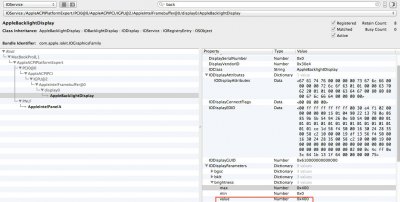Make sure you don't have setbrightness interfering...
And I verified again. I did the following:
- set the brightness 4 levels from brightest (4 dark squares on right)
- restarted
- logged in, waited for blinkscreen to kick in
- checked brightness with F2
- result: brightness was then set to five from brightest (5 dark squares on right)
- set brightness to 4 levels from lowest (4 bright squares on left)
- restarted
- logged in, waited for blinkscreen to kick in
- checked brightness with F2
- result: brightness was then set to three from brightest (3 bright squares on left)
In other words, other than the blinking display and having to login first, it works like it should.
Side note: I tried running the blinkscreen before login, but the OS calls it is making doesn't work at the login screen -- login screen seems 'special'...

